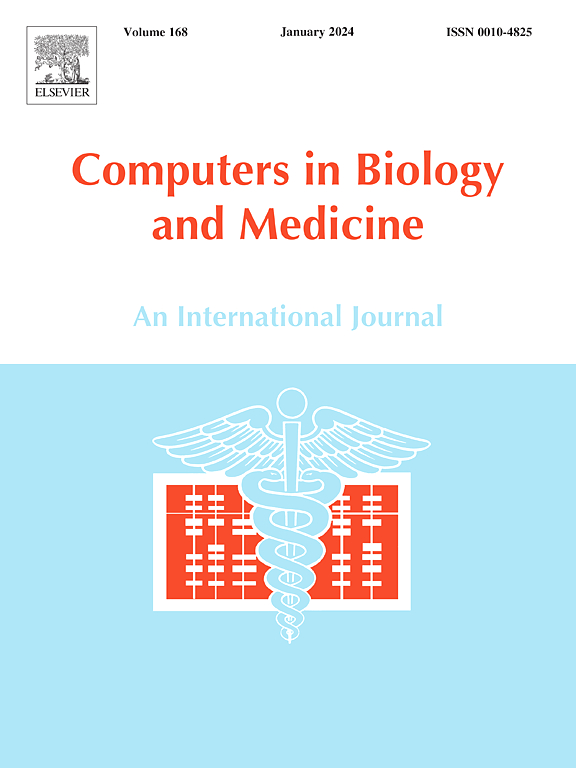吸入纤维在真实女性气道模型中的运输和沉积:一项实验与数值相结合的研究
IF 6.3
2区 医学
Q1 BIOLOGY
引用次数: 0
摘要
本研究在一个真实的雌性呼吸道模型中对纤维的运输和沉积进行了实验和数值研究,该模型延伸到第7代分支。数值模拟使用欧拉-拉格朗日欧拉-旋转(ELER)方法进行,该方法是传统有限体积方法的有效替代方法,具有明确的公式和巨大的可扩展性,能够在高性能集群上实现快速并行化。将ELER方法与晶格玻尔兹曼方法(LBM)相结合,模拟了真实吸气流剖面下的纤维动力学。使用相同的物理气道副本进行实验验证。结果表明,上呼吸道和气管的模拟与实验结果吻合良好,但在分岔上存在一些差异,这可能是由于使用ELER模拟复杂湍流的挑战。该方法比相应的有效直径模拟更准确。沉积模式作为纤维尺寸的函数进行了分析,揭示了ELER方法对较小颗粒的准确性更高,并证实了高纵横比纤维深入肺部的趋势。取向相关的沉积机制被部署,强调解决纤维的实际取向的重要性。在促进我们对女性气道纤维运输的理解的同时,研究结果也揭示了当前数值技术的局限性,特别是在分岔方面。这项研究强调了纤维颗粒与球形颗粒的不同行为,纤维颗粒表现出更大的倾向于到达更深的肺区域,这对吸入毒理学和药物传递具有重要意义。本文章由计算机程序翻译,如有差异,请以英文原文为准。
Transport and deposition of inhaled fibers in a realistic female airway model: A combined experimental and numerical study
This study presents a combined experimental and numerical investigation of fiber transport and deposition in a realistic model of the female respiratory tract, extending to the seventh generation of branching. Numerical simulations were performed using the Euler–Lagrange Euler-Rotation (ELER) method, an efficient alternative to conventional Finite Volume Methods that benefits from explicit formulation and vast scalability, enabling fast parallelization on high-performance clusters. The ELER method was coupled with the Lattice Boltzmann Method (LBM) to simulate fiber dynamics under a realistic inspiratory flow profile. Experimental validation was conducted using an identical physical airway replica. The results demonstrated good agreement between simulations and experiments in the upper airways and trachea, with some discrepancies in the bifurcations, likely owing to the challenges of modeling complex turbulent flow with ELER. This method is more accurate than corresponding effective diameter simulations. Deposition patterns were analyzed as a function of fiber dimensions, revealing higher accuracy of the ELER method for smaller particles and confirming the tendency of higher aspect ratio fibers to penetrate deeper into the lungs. The orientation-dependent deposition mechanism was deployed, underscoring the importance of solving the actual orientations of the fibers. While advancing our understanding of fiber transport in female airways, the findings also reveal limitations in current numerical techniques, particularly in bifurcations. This study emphasizes the distinct behavior of fibrous versus spherical particles, with fibers exhibiting a greater propensity to reach deeper lung regions, which has significant implications for inhalation toxicology and drug delivery.
求助全文
通过发布文献求助,成功后即可免费获取论文全文。
去求助
来源期刊

Computers in biology and medicine
工程技术-工程:生物医学
CiteScore
11.70
自引率
10.40%
发文量
1086
审稿时长
74 days
期刊介绍:
Computers in Biology and Medicine is an international forum for sharing groundbreaking advancements in the use of computers in bioscience and medicine. This journal serves as a medium for communicating essential research, instruction, ideas, and information regarding the rapidly evolving field of computer applications in these domains. By encouraging the exchange of knowledge, we aim to facilitate progress and innovation in the utilization of computers in biology and medicine.
 求助内容:
求助内容: 应助结果提醒方式:
应助结果提醒方式:


